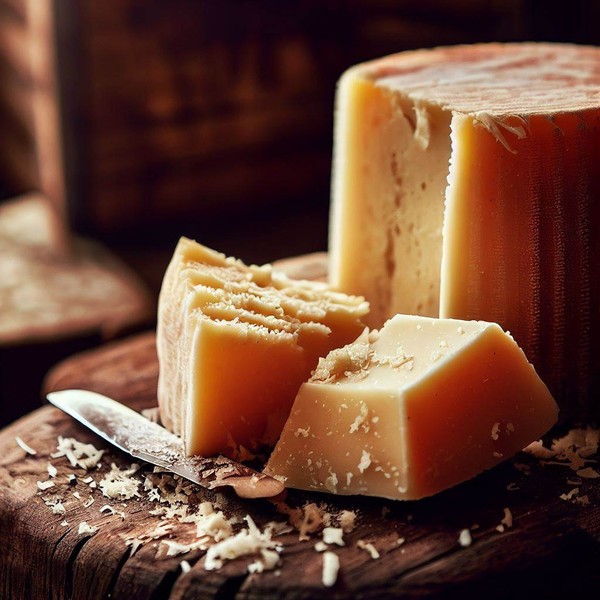Parmesan Cheese

Parmesan cheese, also known as Parmigiano-Reggiano, is a hard, granular cheese that originated in Italy. It is widely used in many cuisines around the world, known for its sharp, nutty flavor and distinctive texture.
Marthinus StrydomThe Story
Parmigiano-Reggiano is a hard, granular cheese that has been produced in Italy for centuries. It originated in the Emilia-Romagna region of Northern Italy, which includes the provinces of Parma, Reggio Emilia, Modena, and Bologna. The cheese is made from cow's milk, which is carefully selected and processed to produce a high-quality product. The production process for Parmigiano-Reggiano is strictly regulated by law, with specific standards for milk quality, production methods, aging, and labeling. The cheese is aged for a minimum of 12 months, and often up to 36 months or more, to develop its characteristic flavor and texture. Parmigiano-Reggiano is known for its nutty, slightly sweet flavor, and its hard, grainy texture, which makes it ideal for grating over pasta, salads, and other dishes. It is a staple of Italian cuisine, and has become popular in many other countries around the world.
More about Italy
Italy is one of those countries about which you probably have quite a number of preconceptions before you have put one foot into the country. A country of olive oil and mafia, pasta, wine and sunshine, roman ruins and renaissance palaces, Italy has a lot to offer its visitors. Although some of these images are appealing, it would be a shame if that was the only thing you come away with. Italy is certainly much more complex and interesting than that.

Subscripe to my Facebook page.
Subscripe to my Youtube channel.
© All recipes are copyright protected by TheCultureCook.com unless the recipe was adapated from another source. All recipes are uniquely crafted and adapted by TheCultureCook.com. Copyright of some or all of the text reside with the original author.
Ingredients
Method
- Heat milk to 33 degrees C
- Sprinkle thermophilic culture over the milk.
- Cover and rehydrate for 5 min
- Stir well
- Cover and allow to ripen for 45 min while keeping the temperature at 33 degrees C
- Add lipase and stir
- Cover and allow to ripen for 15 min
- Stir well
- Move milk with a spoon and add calcium chloride (diluted in 1/4 cup water)
- Add rennet (diluted in 1/4 cup water)
- Stir for 1 min
- Cover and allow to coagulate for 45 min
- Check for a clean break
- Use whisk to cut curds into lentil size pieces.
- Heat to 51 degrees C over a 1 Hour period while continuously stirring
- Test curd to see if it's ready for pressing (grab some curd and squeeze. Then scrape the curd in your hand. If it separates into individual curds then it is ready. If not, stir for another 15 minutes and test again.
- Cover and allow curds to settle in the bottom for 5 min
- Drain curds into mould
- Press at 11kg for 30min
- Press at 22kg for 12 hours
- Submerge in a saturated brine solution for 18 hours (turn at 9)
- Air dry 2-3 days
- Age for 6 - 12 months
